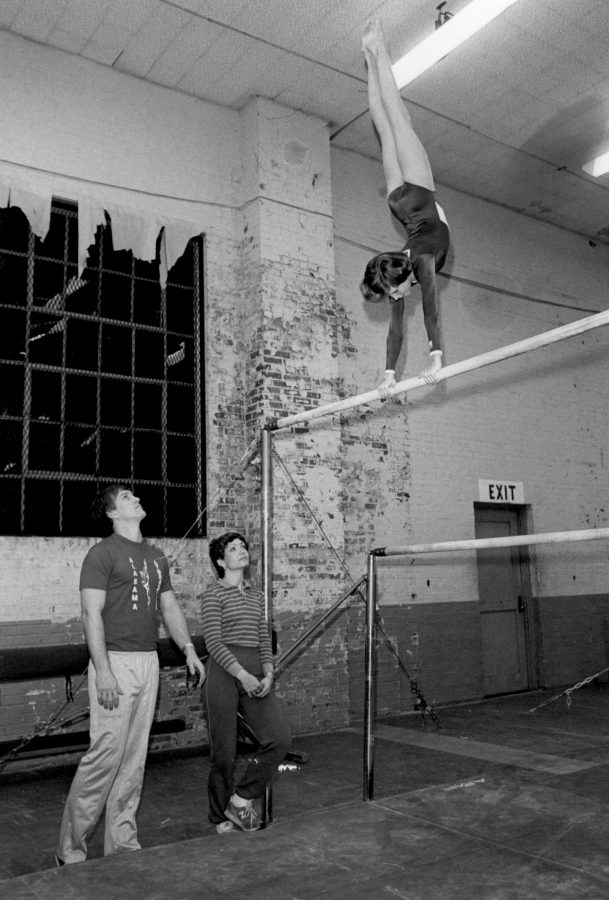When gymnastics coach Sarah Patterson walks to her office down the third-floor hallway at Coleman Coliseum, she is reminded of just how far women’s sports have come at Alabama. She passes, among others, the offices of women’s soccer coach Todd Bramble, softball coach Patrick Murphy and rowing coach Larry Davis.
Bramble, Murphy and Davis were not around when Patterson first arrived at Alabama in 1979, just seven years after then-president Richard Nixon signed Title IX, which requires that all educational institutions receiving public funding not discriminate based on sex, into law. In fact, the sports they coach did not even exist at Alabama.
But in the 40 years since Title IX was passed, women’s sports at UA are now bigger than ever, enjoy top-notch facilities and compete at the highest level.
“[The law is] the reason that I have a career in athletics,” Patterson said. “When I see, now, the success of our teams, I see 15,000 people at a gymnastics meet, I see a sold out Rhoads Stadium for women’s softball. Without Title IX, [women’s] sports may have emerged, but I don’t think we would be at this level.”
In 1972, there were no varsity women’s sports at the University of Alabama. But within three years of the adoption of Title IX, volleyball, basketball, golf, swimming and diving, tennis and gymnastics were competing at the Division 1 level for the Crimson Tide.
In the early ‘80s, track and field, both indoor and outdoor, as well as cross-country were added. The women’s soccer team competed from 1986-88 before being revived permanently in 1994. The softball team was started in 1997, and the most recent addition to women’s sports, rowing, became a varsity sport in 2006 after competing for 19 years at the club level.
According to a study done by researchers at Brooklyn College, in 2008 there were 9,101 women’s intercollegiate athletic teams nationwide, the highest ever. On average, the study said, there were 8.65 women’s teams per school, also a record high.
“It’s just such a different mindset now,” Patterson said. “Some of our young athletes today, some of them, if you don’t explain it to them, they don’t really understand.”
As the number of women’s sports grew at Alabama, so did the fan support. Gymnastics averaged 12,826 fans per meet this season and had four crowds of over 12,000 fans for the third year in a row. In 2010, the program averaged a record 13,786 fans per meet.
Patterson built the program from essentially nothing, and remembers the days when around 50 people occupied the stands in Foster Auditorium. Paul “Bear” Bryant almost cut the program in 1979, but after seeing Patterson’s success in her first season, he famously said, “Give the little lady what she wants.”
“Under Coach Bryant, if you won, you got what you needed,” Patterson said last year.
She has seen support grow for the other women’s sports as well, including softball, which holds a special place in the coach’s heart. The program started playing in a local park and now plays games at Rhoads Stadium, one of the largest softball facilities in the country.
One of Patterson’s daughters, Jordan, attended a softball camp at Rhoads Stadium in elementary school and last week hoisted the national championship trophy as a member of Patrick Murphy’s team.
“In having the opportunity to come here to Alabama, he knew he could put his program in a position to contend for a national championship,” Patterson said of Murphy.
The two coaches share a special relationship. Patterson gave Murphy advice as he built the softball program into a championship team that draws support from passionate fans every year. Rhoads Stadium has hosted a number of post-season tournaments and this year set a three-day attendance record for the SEC tournament with 10,044 fans.
“To have this type of crowd and this type of media presence for women’s softball is just incredible,” Murphy said after his team took home the conference tournament crown.
When she was in Tuscaloosa for the NCAA Super Regionals Michigan softball coach Carol Hutchins commented on the legacy of Title IX.
“[Without Title IX,] You wouldn’t see anything you see right now,” Hutchins said.
Hutchins was hired at Michigan in 1985 and has been around women’s collegiate athletics since long before Title IX. She played softball at Michigan State before it was an NCAA sport and remembers not having locker rooms or facilities of any kind, and she remembers not being on scholarship. Now, softball programs like Michigan and Alabama enjoy state-of-the-art facilities and have the resources and opportunities to travel across the country for NCAA Regional and Championship tournaments.
“Times have changed tremendously,” Hutchins said. “And there’s no other reason than Title IX.”
Gymnastics and softball have been the gold standard for women’s athletics at Alabama, but in the 2011-12 season, other programs like golf, tennis and soccer enjoyed historic seasons as well and are approaching the level of the Tide’s top two women’s sports. Whether they do reach that level is still to be determined, but one thing remains constant: none of it would have been possible without Title IX.
“It doesn’t matter whether you’re a female or a male,” Patterson said. “The opportunity for success should not be based on gender. I think you can see that with the success of our women’s teams.”









